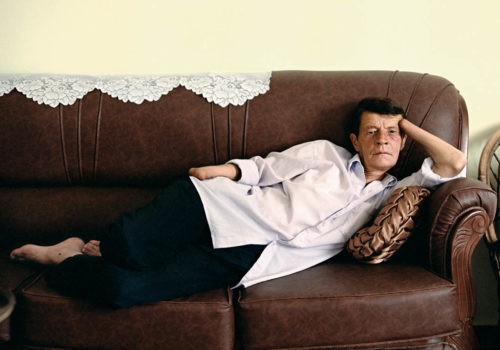“Where there is no son, there is no future.”
Such is the cultural sentiment of the Accursed Mountains of Albania, though this could be the prevailing opinion of countless cultures across the globe throughout time. How ironic it is to recognize that up until the 1920s almost one third of the male population of this country died in vendettas. Pride cometh before a fall, so it has been written.
To people with First World sensibilities, the exaltation of the masculine is at once all too familiar and all too foreign. Yet it reminds us that the commitment to women’s rights is rather novel in the history of the world. It reminds us that in many places, being a woman is fraught with unimaginable horror. How easily we forget, until we are reminded of this, not necessarily in the stark portrayals of human trafficking, but in the exploration of cultural norms. Of how some women adapt themselves to their lot, of the women of the Accursed Mountains who are the Virgjineshtë, the Sworn Virgins.
It is here in these mountains, said to be created by the devil himself, that the Kanun, a collection of laws from the Middle Ages, passed on for generations by world of mouth, permits families to replace the male head of the household with a woman in the case of the patriarch’s death. In other cases newborn girls are declared sons and raised as boys for the purpose of providing the family with a male heir. In taking this position, the woman must take an oath to preserve her virginity for the rest of her life, and to live, dress, and work as a man in a social, rather than sexual, sense. As time goes by they adapt to their roles so perfectly that all that is female about them is lost. And what is gained is the power and prestige of the masculine.
In Sworn Virgins (Kehrer Verlag), photographer Pepa Hristova beautifully presents the thirteen such Virgjineshtë, ranging in age from 30 to 86. Each is given a chapter that opens with a pink newspaper insert, featuring a quote an a small selection of black-and-white personal photographs. Here we witness the life of the Virgjineshtë as it unfolded across the years. Then we come to Hristova’s portraits, quiet meditations on the beingness of a way of life that few possess. Within several of the chapters, there is a gatefold, a series of three candid snapshots that reveal the Virgjineshtë’s body language that create a sense of the masculine more than most anything else.
It is said that gender is performative, yet from these photographs we come to understand that this also applies to the very construction of identity itself. While some live completely as men, other Virgjineshtës retain attributes of their original form, from their names to the pronouns describing them as female. They are not trying to pass for men but rather inhabiting an entirely new realm.
Shkurtan, age 76 in the photograph, informs us that she decided to become a man at six years old in order to tend the animals and have the freedom to go where she wanted. In the back section of the book, the story is told of Shkurtan’s day spent with Hristova, where she comments, “People do stupid things because of a woman and gamble their lives away. So many capable men have ended up being one big nothing.” The text goes on to explain, “[Shkurtan], by contrast, worked her way up to leading positions in factories; the Party sent her to Tirana for training. That she was different from the others did not prove a disadvantage in any way. On the contrary, since she didn’t have to worry about a family, she could focus more on her work.”
Indeed, it appears that to be born a woman and made a man has benefits that no others can claim. It is in the sacrifice that the Virgjineshtë reaps their reward. They are honored and respected by men, free to live on their own terms, free from the limitations and disgrace of being born a female in a culture that exalts the masculine form.
BOOK
Sworn Virgins
Editor: F. C. Gundlach
Authors: Danail Yankov, Sophia Greiff
Artists: Pepa Hristova
Hardcover
22 x 26,5 cm, 228 pages
100-page insert, 71 color and 63 b/w ills.
English
ISBN 978-3-86828-347-1
49,90 Euro
2013
http://www.artbooksheidelberg.com
http://missrosen.wordpress.com
















